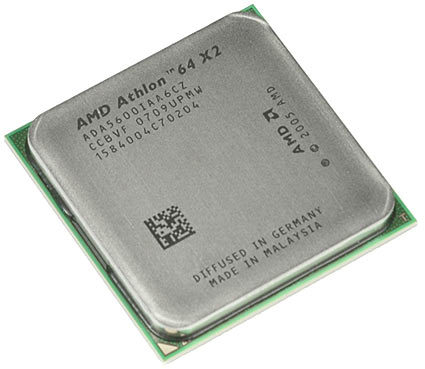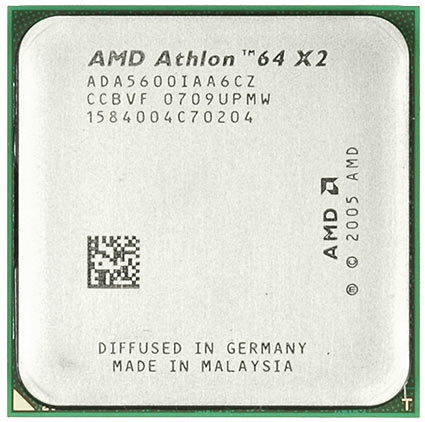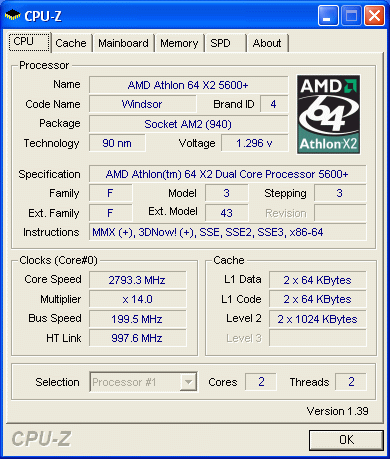Current Mainstream CPU Lineups
The Challenger: AMD Athlon 64 X2
The Athlon 64 X2 has been around for almost two years, but the most interesting models are exclusively available for Socket AM2, which hosts processors with support for DDR2-800 memory. While the regular dual core portfolio starts with a 3800+ at 2.0 GHz, we recommend going for a model with some more performance. This makes a lot of sense, as the most expensive Athlon 64 X2 processor, the 6000+, only costs $241. The 2.5 GHz 4800+ model (this one is a 65 nm version) carries a $136 price tag. However, we decided to use the 5600+, as it runs at 2.8 GHz, but still is available for less than $200.
It is important to mention that AMD does have a product to challenge Intel's Core 2 Quad and Core 2 Extreme QX6700 and QX6800, but you will have to purchase a very special platform for it. The Athlon 64 FX-70 processor family largely utilizes AMD's entry-level Opteron platform, which is based on Socket 1207. AMD simply turned it into a top-end consumer product and branded the platform 4x4. Purchasing FX-70, FX-72 or FX-74 means purchasing a processor kit that includes two CPUs - the FX-70 starts at 2.6 GHz, while the FX-74 is the 3.0 GHz top model. Unlike workstation or server class Opteron systems, the 4x4 runs on unbuffered DDR2-800 memory.
AMD has made clear that the next-generation 65 nm quad-core, known as Barcelona and to be publicly called Phenom, will work in existing AM2 solutions. It remains unclear how the 4x4 platform will be supported. Since Intel also announced a dual-socket platform, we're sure that AMD will be ready with a processor product for 4x4.
Athlon 64 X2 5600+
It's difficult to understand AMD's model strategy, as the firm does have working 65 nm technology, which we found to be very energy-efficient. However, it might not be suitable for high clock speeds yet, as AMD only uses it for the mainstream processors (4000+ to 4800+) as well as an energy-efficient version (EE) called the 3600+.
There are two 5000+ models, one using the 90 nm process, the other one based on 65 nm manufacturing, but every processor rated 5200+ and up is a 90 nm part. The reason why we put emphasis on this is the power consumption and heat dissipation: the 90 nm CPUs are rated at a maximum thermal design point of 89 W, while the 65 nm CPUs have a 65 W limit. Thus, getting the more advanced technology generally is favorable, though not always.
The 5600+ looks particularly interesting to us, as it offers a 2.8 GHz clock speed, making it 200 MHz faster than the 5200+. Typically we wouldn't say this is important, as the clock speed difference is a mere 8% increase, but the speed bump comes at a premium of only $10.
We also included the 3.0 GHz 6000+ model in our benchmarks, because the results clearly show that 200 MHz more clock speed does not necessarily pay off. Have a look at the memory clock speed considerations on the next page.
Get Tom's Hardware's best news and in-depth reviews, straight to your inbox.
Current page: The Challenger: AMD Athlon 64 X2
Prev Page The Performance King: Intel Core 2 Duo Next Page Athlon 64 Processors DDR2 Speed Table
Patrick Schmid was the editor-in-chief for Tom's Hardware from 2005 to 2006. He wrote numerous articles on a wide range of hardware topics, including storage, CPUs, and system builds.



